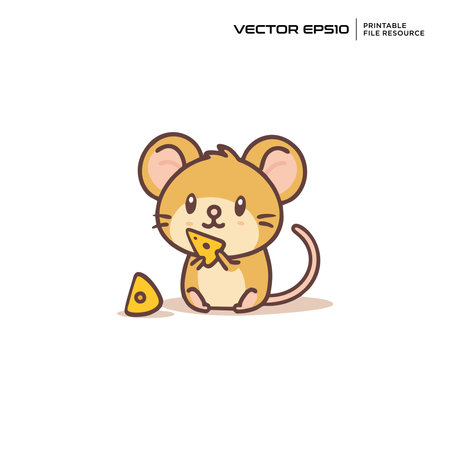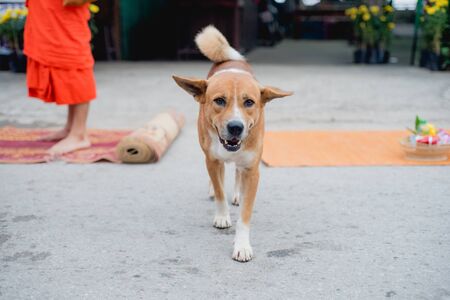Introduction: The Importance of Exercise for Small Pets
For many American families, small pets like rabbits, guinea pigs, hamsters, and ferrets are beloved companions who bring joy and comfort into the home. However, it’s easy to underestimate their need for regular physical activity. Just like dogs and cats, small pets require consistent exercise to maintain a healthy weight, support cardiovascular health, stimulate their minds, and prevent boredom-related behaviors. Physical activity is also vital in preventing common health issues such as obesity, muscle atrophy, and digestive problems. When small animals have opportunities to explore and play safely, it enhances not only their physical fitness but also their emotional well-being. Understanding the significance of daily exercise can help pet owners create a happier and healthier environment for their furry friends—setting the stage for a long and vibrant life together.
2. Mistake: Overlooking Species-Specific Exercise Needs
One of the most common mistakes small pet owners make is assuming that all small animals have similar exercise requirements. In reality, each species has unique physical and mental needs based on their natural behaviors, habitat, and energy levels. Providing the wrong type or amount of activity can lead to boredom, stress, obesity, or even injury. Understanding these differences is key to offering your pet a healthy and enriched life.
Why Species-Specific Exercise Matters
Small pets, such as rabbits, guinea pigs, hamsters, ferrets, and birds, each have distinct ways they like to move and play. For example, while hamsters thrive with running wheels, rabbits benefit from space to hop and explore. Overlooking these differences can result in unmet needs and behavioral problems.
Common Small Pet Species & Their Exercise Needs
| Species | Preferred Activities | Recommended Daily Exercise |
|---|---|---|
| Rabbits | Hopping, exploring tunnels, jumping platforms | At least 3-4 hours outside cage |
| Guinea Pigs | Foraging, gentle running, obstacle courses | 1-2 hours in a safe play area |
| Hamsters | Running wheels, tunnels, burrowing | Nightly access to wheel and enrichment toys |
| Ferrets | Tunneling, climbing, chasing toys | 4+ hours supervised playtime daily |
| Birds (Parakeets/Cockatiels) | Flying, climbing perches/ropes, interactive toys | Several hours out-of-cage flight time daily |
How to Avoid This Mistake:
The best way to avoid overlooking your pet’s unique exercise needs is to research their natural behaviors and consult with veterinarians or experienced owners. Tailor your pet’s environment with species-appropriate enrichment—think tunnels for rabbits, safe wheels for hamsters, or multi-level cages for ferrets. When in doubt, remember that variety and regular supervision are essential for keeping your pet both physically active and mentally stimulated.

3. Mistake: Unsafe Exercise Environments
Ensuring a safe space for your small pet to exercise is just as important as making sure they get enough activity. Many owners unintentionally overlook common hazards that can put their pets at risk during playtime. Below, we’ll explore these dangers and offer practical tips to help you create a secure environment for your furry friends.
Common Safety Hazards in Play Areas
One of the most frequent mistakes is using inadequate playpens or enclosures that small pets can escape from or injure themselves on. Wire gaps may be too large, or the enclosure might not be sturdy enough, allowing for accidental escapes or injuries. Additionally, household plants—some of which are toxic to animals like rabbits, guinea pigs, and hamsters—are often within reach during playtime without owners realizing the danger.
Other Overlooked Risks Include:
- Loose electrical cords and outlets
- Small objects that can be swallowed
- Poorly ventilated or overheated spaces
- Access to stairs or furniture that could lead to falls
Tips for Creating a Secure Exercise Space
- Select a Proper Playpen: Choose an enclosure specifically designed for your type of pet, ensuring it’s high enough and has no large gaps.
- Remove Toxic Plants: Familiarize yourself with plants that are dangerous to small pets (like lilies, philodendron, and aloe) and keep them out of reach or out of the room entirely.
- Pet-Proof the Area: Cover electrical outlets, tuck away cords, and pick up small items that could be chewed or ingested.
- Monitor Temperature: Make sure the area isn’t too hot or cold, as small pets are sensitive to temperature extremes.
Supervise Playtime
No matter how well you prepare, always supervise your pet during exercise sessions. This allows you to quickly address any unexpected hazards and keep your companion safe while they explore and enjoy healthy activity.
4. Mistake: Lack of Supervision During Playtime
Letting your small pet roam or play without supervision is a common mistake many owners make, often underestimating the potential risks involved. Small pets like rabbits, guinea pigs, hamsters, and ferrets are curious by nature and can easily get themselves into trouble if left alone during exercise periods. Unsupervised playtime increases the risk of accidents, injuries, and even escape.
Why Supervision Is Essential
Small pets can squeeze into tight spaces, chew on electrical cords, or ingest items that are toxic to them. For example, a rabbit left alone might nibble on houseplants that are poisonous, while a hamster could slip behind furniture and become trapped. Supervision not only protects your pet from immediate physical harm but also helps prevent emotional stress if they become lost or injured.
Common Accidents When Pets Are Left Unattended
| Accident Type | Example | Potential Outcome |
|---|---|---|
| Chewing on Cords | Rabbit bites through phone charger cable | Electrical shock or burns |
| Ingestion of Toxic Items | Guinea pig eats household plant | Poisoning, gastrointestinal distress |
| Escape & Entrapment | Hamster crawls under fridge | Injury, difficulty retrieving pet |
| Falls from Heights | Ferret climbs and falls off table | Broken bones, trauma |
| Poor Interaction with Other Pets | Bunny meets family dog unsupervised | Bites, scratches, severe injury |
Preventive Steps for Safe Playtime
- Create a Pet-Proofed Area: Use playpens or designate a room where all hazards (cords, toxic plants, small gaps) are removed.
- Supervise Constantly: Always stay in the room when your small pet is outside its enclosure. If you need to step away, return your pet to its safe space first.
- Use Toys Wisely: Offer safe toys to keep your pet engaged and reduce the urge to explore dangerous areas.
- Monitor Interactions: Never leave small pets alone with other animals unless you’re confident they’re fully compatible and supervised.
- Inspect Regularly: Routinely check your play area for new hazards or escape routes that may develop over time.
The Bottom Line: Supervision Keeps Your Pet Safe and Happy
A little vigilance goes a long way in preventing accidents during exercise time. By supervising your small pet and preparing their environment carefully, you’ll help ensure that playtime remains fun—and most importantly—safe for everyone involved.
5. Mistake: Using Inappropriate Exercise Equipment
One of the most common mistakes small pet owners make is using exercise equipment that isn’t suitable for their pets. For example, hamster balls are often marketed as a fun way for small animals to get exercise, but they can actually be quite dangerous. These balls can restrict airflow, cause injury if the pet collides with furniture or walls, and create a stressful environment because pets cannot escape when they feel overwhelmed. Similarly, not all exercise wheels are created equal. Wheels with rungs or gaps can lead to serious injuries like broken limbs or tail injuries, especially for smaller species like dwarf hamsters or mice.
Instead, opt for solid-surface wheels that are appropriately sized for your specific pet—generally, larger diameters help prevent back problems. Always ensure the wheel runs smoothly and quietly, and check it regularly for signs of wear or damage. For playtime outside the cage, consider creating a safe and enclosed playpen area with tunnels, chew toys, and climbing structures specifically designed for small animals. This allows your pet to explore and exercise in a controlled environment without the risks posed by unsuitable equipment. By choosing exercise options tailored to your pet’s needs, you can promote their physical health while reducing stress and risk of injury.
6. How to Avoid Common Mistakes: Practical Tips for Small Pet Owners
Helping your small pet stay healthy and happy doesn’t have to be complicated, but it does require mindful planning and observation. Here are some actionable strategies to help you avoid the most common exercise mistakes:
Establish a Consistent Exercise Routine
Consistency is key when it comes to exercise. Set aside dedicated time each day for your small pet’s activity. Whether you have a hamster, rabbit, guinea pig, or ferret, regular playtime helps prevent boredom and supports both mental and physical health. Try scheduling exercise sessions at the same time each day—this not only helps you remember but also allows your pet to anticipate and look forward to their active time.
Observe Your Pet’s Behavior Closely
Every small animal is unique, with its own preferences and limitations. Pay attention to signs of fatigue, stress, or disinterest during play. If your pet seems lethargic, hides frequently, or stops engaging with toys, it may be time to adjust your routine or consult a professional. Noticing subtle changes can help prevent injury or overexertion.
Consult Your Veterinarian Regularly
Your vet is an invaluable resource when it comes to creating an appropriate exercise plan. At annual check-ups—or sooner if you notice any health concerns—ask about recommended activity levels and safe types of exercise for your specific species and breed. Vets can provide guidance tailored to your pet’s age, size, medical history, and personality.
Adapt Your Home Environment
A safe and stimulating environment makes all the difference. For example, ensure that playpens are secure and free from hazards like electrical cords or toxic plants. Rotate toys regularly to keep things interesting, and consider adding tunnels, climbing structures, or chew toys suited to your pet’s species. Remember that even small animals need room to explore and express natural behaviors.
Remember: Every Pet Is Different
The best way to avoid common mistakes is to stay flexible and attentive. What works for one guinea pig might not be ideal for another rabbit or hamster. By combining a consistent routine with careful observation and professional advice, you’ll create an exercise plan that keeps your small companion thriving for years to come.


